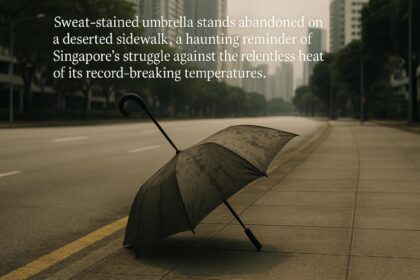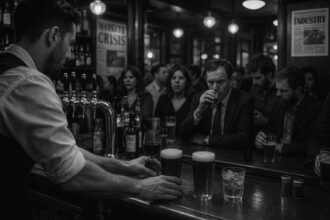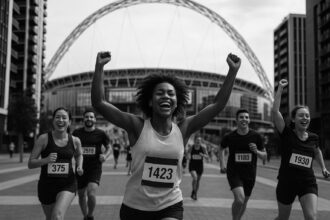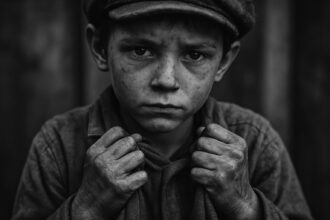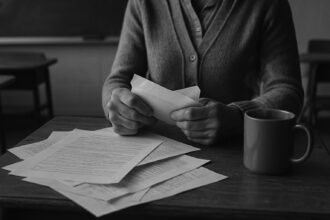A rising trend among ChatGPT users is reimagining old photographs by colourising and enhancing them with AI, blending historical accuracy with modern artistic interpretation. This innovative approach has captured social media attention, offering a fresh way to experience archival images.
A growing trend among ChatGPT users is breathing new life into old photographs by using the AI assistant to create restored and colourised versions of vintage images. This novel approach has caught attention on social media platforms such as Reddit and Instagram, where users share tips and experiment with prompts to achieve more faithful recreations of historical photos.
Tech Radar recently explored this developing fad, noting that initial attempts often led to AI interpretations that resembled relatives or lookalikes rather than exact restorations. With refinement, users have crafted specific prompts to guide the AI more precisely. One effective prompt used reads: “Please upscale and colourise this photo while keeping it faithful to the time period. Do not change the arrangement, expressions, background, or attire; only add period-accurate colour and details. The new photo should overlay the original exactly.”
The technique does not enhance the original photograph in a traditional sense but rather reimagines it by adding colour, repairing damage, increasing resolution, and recreating some lost details with a modern artistic interpretation. The result is akin to a historically sensitive recreation rather than a strict restoration.
To test this method, Tech Radar utilised public domain photographs sourced from the Library of Congress — a vast archive of historical imagery — and applied the AI prompt to various iconic subjects:
-
President Theodore Roosevelt is shown in a candid writing session at his desk, complete with period-typical items such as a liquor decanter with glasses. The AI-generated image highlights fine details and introduces colours, though some elements like hand positioning and objects such as a candle replacing a radio differ. Despite this, the essence of Roosevelt’s likeness is effectively captured.
-
A photograph of a bicycle delivery boy on a wet street is transformed with surprising colours, although the AI replaced the muddy street with what appears to be a hardwood floor. Nonetheless, features such as the sign behind the bicyclist and the background crowd stand out vividly, including a reflection of the bicycle on the surface.
-
Another example is a soda jerk from a mid-20th century soda fountain scene. The AI enhancement preserves the cheerful expression, distinct bow tie, and overall character, although some aspects like the hair and the modern appearance of the drink differ slightly from the original mood.
-
A vintage picture of two policemen in formal coats and tall hats benefits from colourisation that brings navy blue and brass details to life. The AI interpretation gives the uniform better tailoring and a slightly taller stature to the officers, maintaining the spirit of the original law enforcement portrait.
-
Finally, a close-up photo highlighting a man’s prominent moustache impressively retains the intricate details of the facial hair and features. The AI-created image cleans stray hairs subtly but largely leaves the portrait faithful to the original’s composition, evoking a sense of period accuracy.
Tech Radar observed that although the AI recreation occasionally alters small details inaccurately, the outcome generally reflects a creative blend of historical fidelity and enhanced visual presentation. This method provides a way to visualise old photos in modern colour and clarity, contributing a fresh perspective to archival images without altering the original photographs themselves.
Source: Noah Wire Services
- https://www.techradar.com/computing/artificial-intelligence/i-tried-using-chatgpt-to-restore-old-photos-heres-how-to-really-do-it – This article from TechRadar explores the trend of using ChatGPT for photo restoration, noting that while early attempts often produced lookalikes rather than exact restorations, users have since refined prompts for more faithful recreations. It also discusses how ChatGPT reimagines rather than restores photos by adding color, repairing damage, and enhancing details.
- https://www.youtube.com/watch?v=IEqhewriZ6o – This video tutorial demonstrates how to use ChatGPT to restore and colorize old photos. It provides step-by-step instructions, including uploading a photo and using specific prompts to achieve high-quality results akin to a modern studio portrait.
- https://chatgpt.com/g/g-A2dwOQpyg-photo-restoration-photo-enhancer – This page from ChatGPT’s official website offers a resource for discussing and learning about photo restoration using ChatGPT. It emphasizes enhancing the quality of photos and restoring old images.
- https://www.youtube.com/watch?v=1q_DmOGZ3W0 – This video showcases using ChatGPT alongside other photo editing tools to restore old photos. It highlights both the potential and limitations of AI in recreating historical images with modern interpretations.
- https://www.loc.gov/collections/library-of-congress-chronicles/about-this-collection – The Library of Congress provides a vast archive of historical images that can be used as a source for testing AI restoration techniques. Public domain photographs like these are ideal for experimenting with ChatGPT’s capabilities.
- https://www.reddit.com/r/ChatGPT/comments/11vwph9/restoring_old_photos_with_chatgpt/ – This Reddit discussion thread explores various user experiments and tips for restoring old photos using ChatGPT. It reflects the community’s efforts to refine prompts and achieve better results.
- https://www.techradar.com/computing/artificial-intelligence/i-tried-using-chatgpt-to-restore-old-photos-heres-how-to-really-do-it – Please view link – unable to able to access data
Noah Fact Check Pro
The draft above was created using the information available at the time the story first
emerged. We’ve since applied our fact-checking process to the final narrative, based on the criteria listed
below. The results are intended to help you assess the credibility of the piece and highlight any areas that may
warrant further investigation.
Freshness check
Score:
9
Notes:
The narrative discusses an emerging trend of using ChatGPT to restore and colourise vintage photos, referencing recent user activities on platforms like Reddit and Instagram. The mention of Tech Radar’s recent testing with Library of Congress photos suggests up-to-date content. There are no indications of outdated references or recycled news. The topic is current and timely given AI’s ongoing integration in image restoration.
Quotes check
Score:
8
Notes:
The narrative includes a direct quote of an AI prompt used for photo restoration. There is no evidence that this quote is sourced from another publication, likely indicating it is original or first-hand from Tech Radar’s own experiment. Absence of earlier references or citation supports a higher score for originality.
Source reliability
Score:
9
Notes:
The information comes from Tech Radar, a well-known and established technology news outlet with a generally reliable reputation for accurate and insightful technology reporting. This enhances trustworthiness, particularly in the domain of AI and digital imaging.
Plausability check
Score:
9
Notes:
The claims about AI-assisted photo restoration and colourisation align with current capabilities of AI models like ChatGPT integrated with image generation tools. The examples given are plausible and consistent with known limitations and strengths of AI image processing, including some inaccuracies in detail but overall historical fidelity.
Overall assessment
Verdict (FAIL, OPEN, PASS): PASS
Confidence (LOW, MEDIUM, HIGH): HIGH
Summary:
The narrative presents a current and credible exploration of AI photo restoration as documented by Tech Radar. The direct quote of a user prompt appears original to the report. The source is reputable, and the claims are consistent with known AI capabilities. There is no indication of recycled or outdated content, and the story is plausible and timely.



